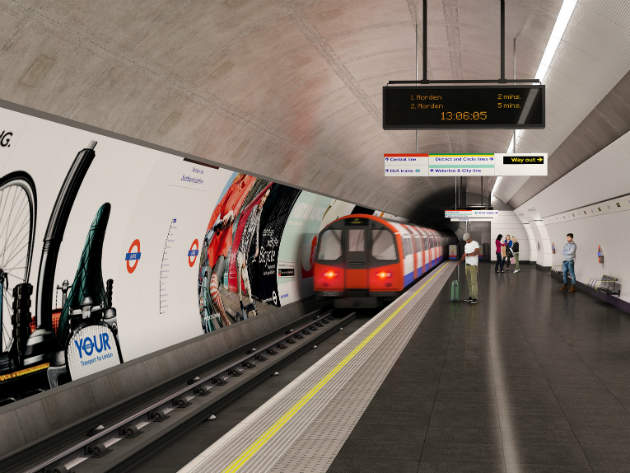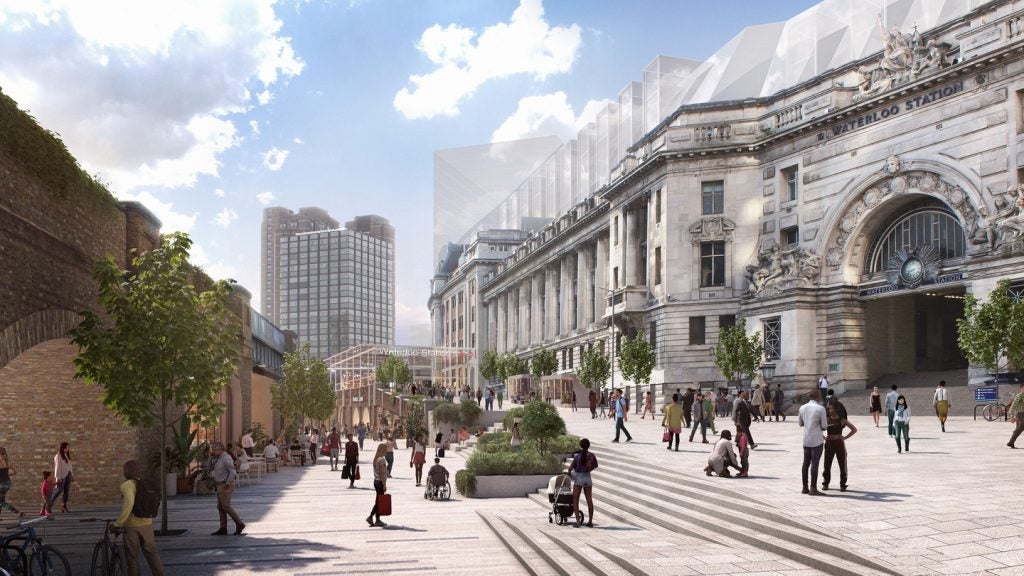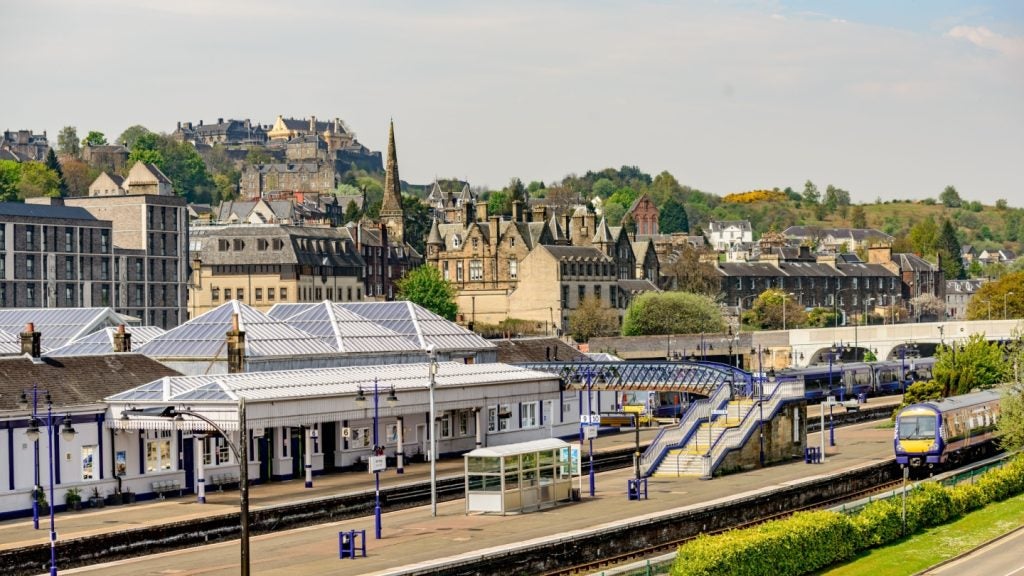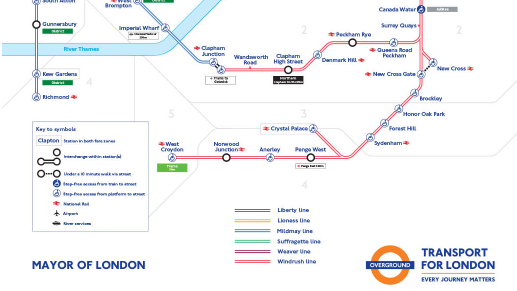
London’s air pollution is one of the main challenges facing the capital and its inhabitants. At the start of this year, the pollution levels surpassed those found in Beijing, one of the most notoriously smoggy cities in the world.
The first culprit that comes to mind is the exhaust fumes from the busy traffic – a problem that Khan promised to tackle by completely banning petrol and diesel vehicles in Greater London by 2040.
But public transport passengers are also exposed to high levels of noxious air substances, according to various studies and statistics that came to light over the course of this year. A better understanding of how dangerous the air passengers breathe in every day was urgently needed as Transport for London’s (TfL) own research into the composition of dust particles on the tube is over a decade old.
As a result, in June Khan instigated a new review of air pollution levels on the Tube, and introduced a series of measures to minimise dust levels on the Underground. The initiative is part of a wider-ranging undertaking across planning, housing, construction, transport and river services to tackle London’s dirty air. The Mayor and TfL have also more than doubled investment in tackling air quality to £875m over the next five years.
“Tube staff and the millions of passengers who use the Underground regularly deserve to breathe the cleanest air possible,” Khan said. “TfL’s new Underground air quality programme will help ensure dust and particles are kept to an absolute minimum.”
Air pollution: what does the evidence say?
In 2013, the University of Southampton published research that started raising questions.
How well do you really know your competitors?
Access the most comprehensive Company Profiles on the market, powered by GlobalData. Save hours of research. Gain competitive edge.

Thank you!
Your download email will arrive shortly
Not ready to buy yet? Download a free sample
We are confident about the unique quality of our Company Profiles. However, we want you to make the most beneficial decision for your business, so we offer a free sample that you can download by submitting the below form
By GlobalDataThe study didn’t specifically focus on London and, at the time, TfL rejected any claims that London Underground air might be unsafe. But the questions raised by the findings inspired campaigners to demand more research into dust concentrations on the capital’s tube system.
Fast forward to 2017, two further independent studies, and TfL’s own statistics, obtained via a Freedom of Information request, claim to have found dangerous levels of bacteria and harmful particulate matter (PM) on the busiest commuter lines.
The first study, from the University of Surrey, found that “those on the Underground are the most exposed to poor air quality during their commutes to work,” even ahead of drivers and bus passengers.
The average concentration of PM2.5 across the Underground was of 34.5 micrograms per cubic metre, while those travelling on carriages with open windows on the Victoria and Northern lines were exposed to the highest levels: 131.6 and 104 micrograms respectively.
The revelation was followed by TfL’s own air quality figures, released after a Sunday Times Freedom of Information request, which showed that regular commuters were breathing in around 12 million toxic nanodust particles per minute.
Most of the pollution found on the tube originates from a combination of the friction from Tube trains against their rails, air ventilated into the Tube network from above ground, and skin particles from passengers – all of which contribute to dust in the Tube system.
The London Metropolitan University also declared the London Underground “the dirtiest form of transport”, after it found a number of bacteria, including nine antibiotic-resistant bacteria identified by the World Health Organization (WHO). The Victoria line was the dirtiest, with 22 different types of living bacteria, followed by the Circle and Piccadilly lines with 20 types, and Northern and Jubilee with 18 different types.
TfL’s own commissioned study by the Institute of Occupational Medicine (IOM), which dates back to 2004, concluded that the particles on the Underground were very different from those above ground, and that the size, nature and the exposure times of underground particles represent “a very low risk of affecting the health of workers or customers”.
Leaving no stone unturned
Over a decade later, both our understanding of harmful air pollutants and the activity of the London Underground have advanced, meaning an updated analysis is pressing.
The Mayor promised to leave “no stone unturned” and commissioned an updated review of the evidence. This will be carried out with the support of the Department of Health’s independent expert Committee on the Medical Effects of Air Pollutants (COMEAP), which provides advice on the health effects of air pollutants.
Firstly, testing with dozens of staff and simulated passenger journeys will be carried out at more than a dozen stations, in order to monitor how dust levels change at different times and locations. Larger samples will now be taken by the available testing equipment.
This will be complemented by an expanded cleaning regime, which will see nearly 50 stations and five tunnel sections cleaned at night with industrial vacuum cleaners and magnetic “wands”. According to TfL, the equipment will collect metal particles and ensure tunnel walls are left clear of accumulations of dust, oil and grease.
TfL currently uses the most efficient dust control measure available, namely regenerative and rheostatic braking, which recaptures energy to reduce friction on rails thereby reducing dust. The entire passenger fleet is now fitted with this technology, and 80% of the passenger fleet is regenerative. The remaining 20% will be fitted with regenerative rolling stock as part of the modernisation of the Piccadilly, Central and Bakerloo lines.
Another crucial element is the type of fuel used to power the machines and tools used in maintenance and upgrade work underground. Following a trial, TfL says replacement fuel for diesel generators will now be used to power all motorised work platforms on 40% of the Tube network.
How do other cities fare?
The operator also promised to look into the best examples of dust management in metro systems around the world.
London’s tube isn’t by far the only to struggle with air quality problems, and research shows that other cities have it much worse.
Last year, a study looking at Paris’ RER metro system revealed that PM10 levels reached up to 70 to 120 micrograms per cubic meter, and even as much as 1,000 micrograms at peak times.
Similarly in Toronto, PM2.5 concentration reached 95 micrograms per cubic metre, a level consistent with the average day in pollution-choked Beijing. This means that Toronto’s commuters were breathing air that was roughly 10 times heavier in particulates than that found at street level.
“We have been monitoring dust levels on the Tube for many years and, through a wide range of measures, have ensured that particle levels are well within Health & Safety Executive guidelines,” said managing director of London Underground, Mark Wild.
“But as scientific understanding of the effects of particles develops, we are ensuring that we’re both using the very latest research and that we’re doing everything possible to keep the air underground clean for our customers and staff.”







